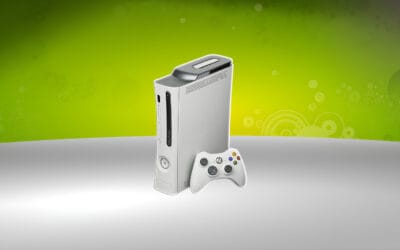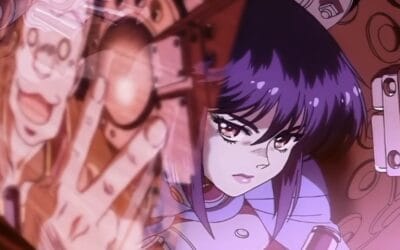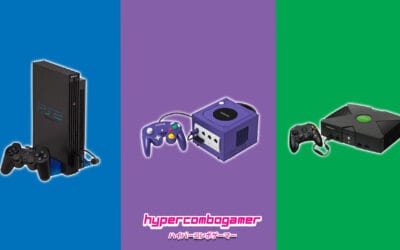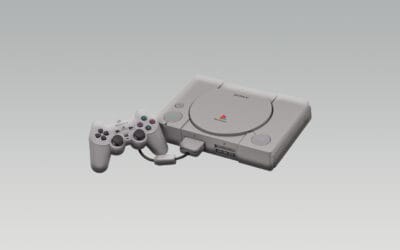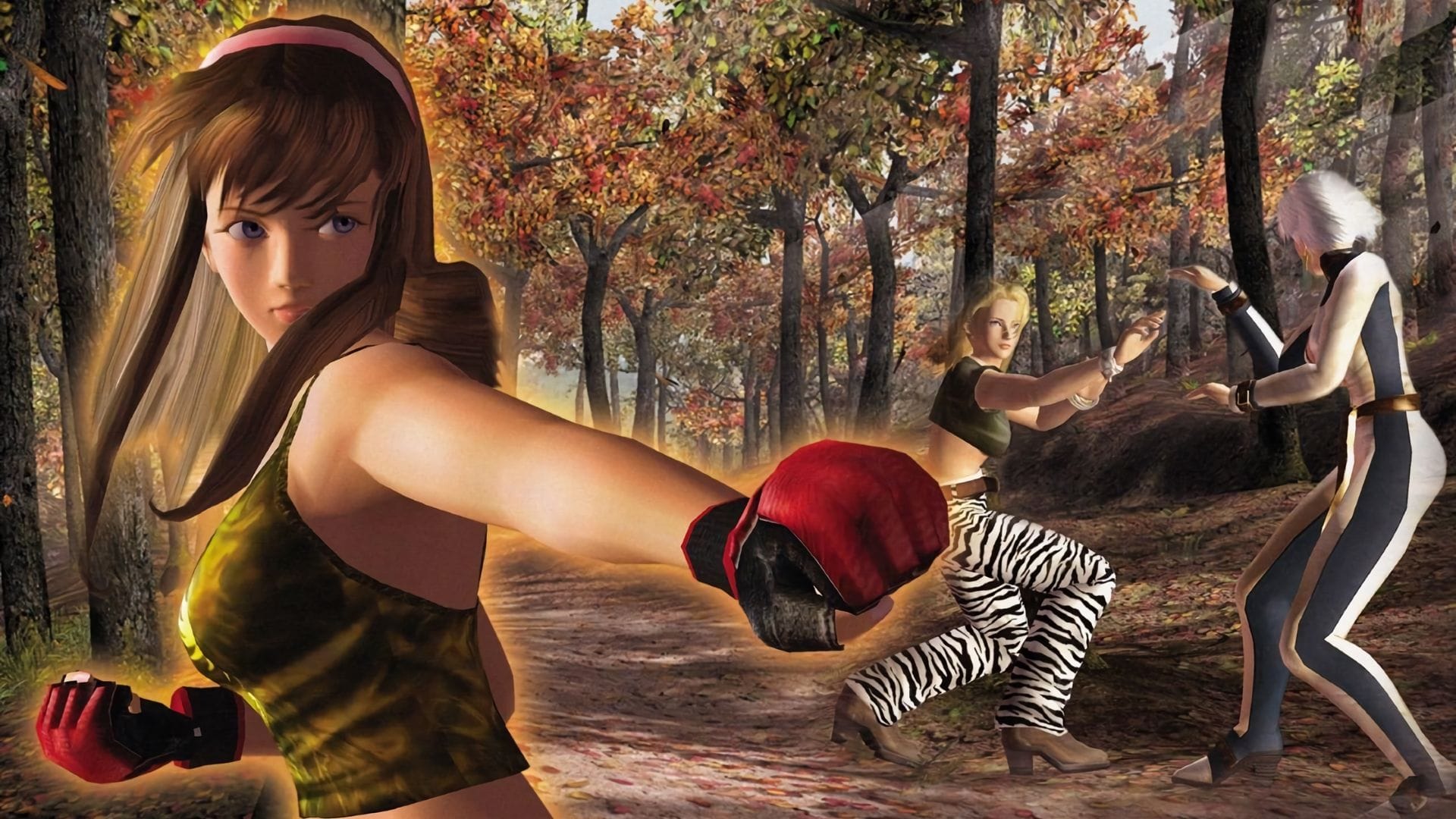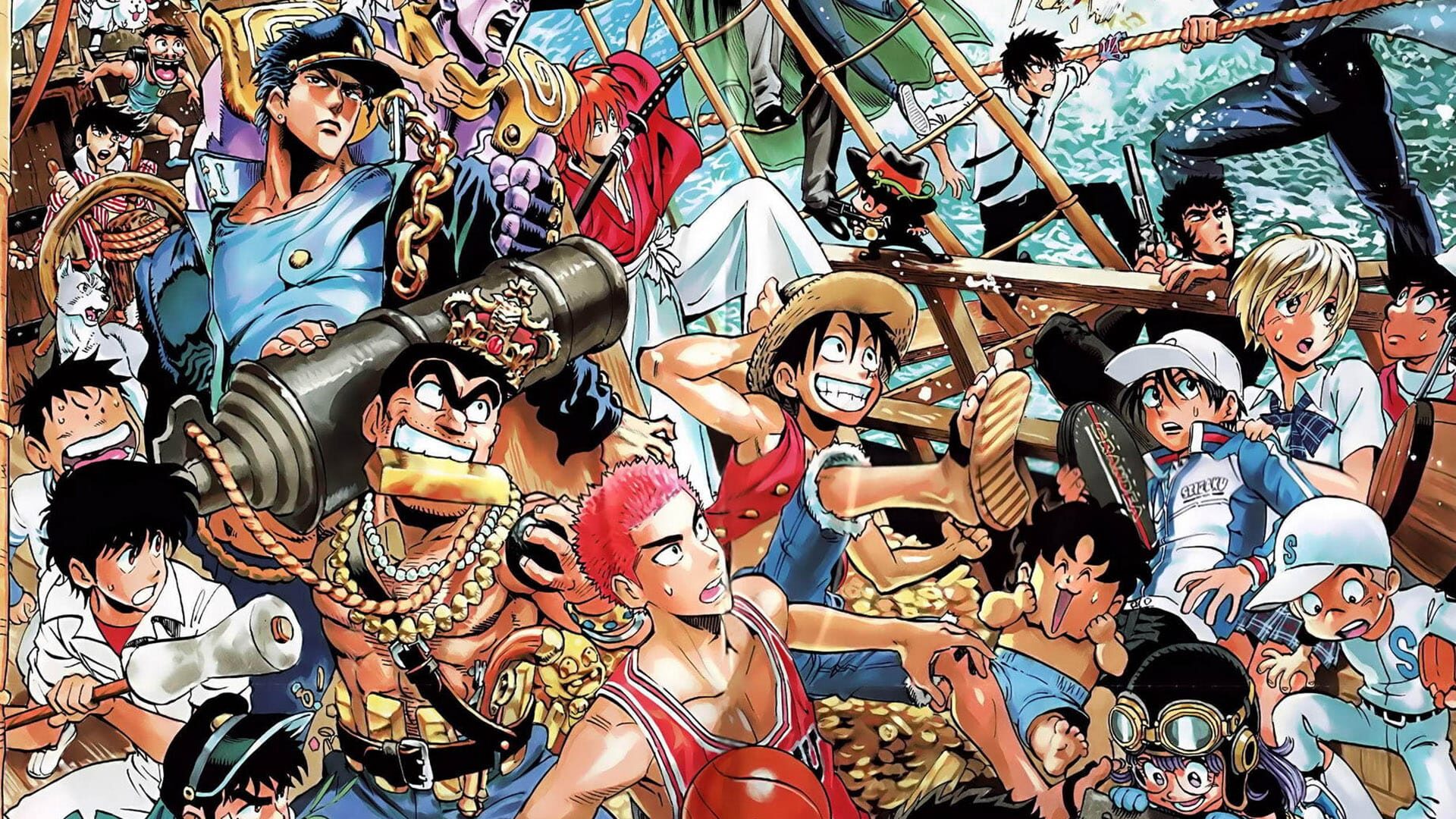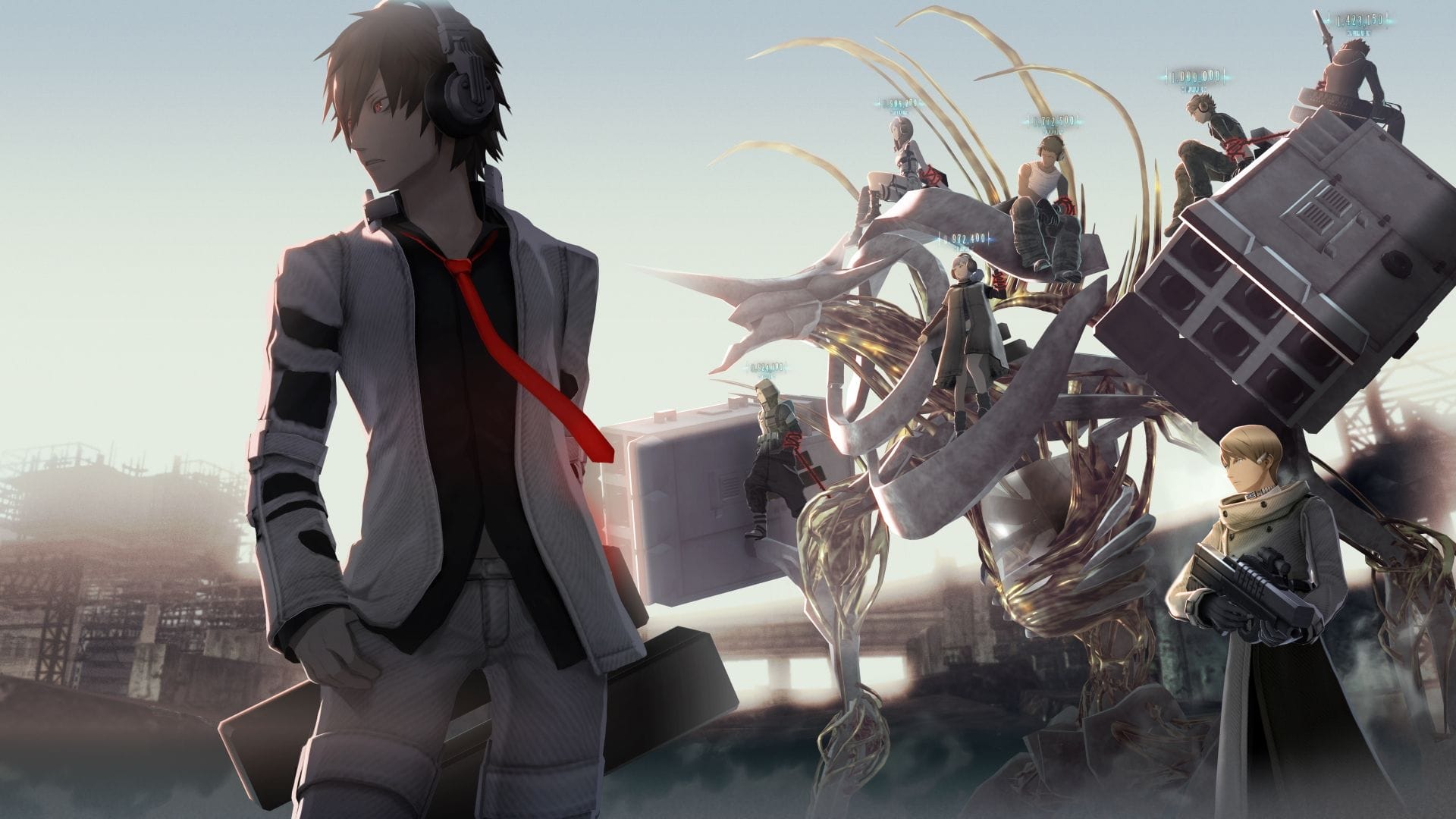In May 2005, the gaming world converged on Los Angeles for what felt less like a trade show and more like a cultural thunderclap. E3 had always been loud, brash, and overloaded with spectacle, but this year carried an extra voltage. The next generation was knocking at the door.
Microsoft pushed hard with the Xbox 360, banking on high-definition as the next great frontier. Sony countered with the PlayStation 3, a machine that seemed engineered to intimidate with raw power and impossible promises. And Nintendo, ever the wildcard, rolled out its enigmatic “Revolution,” offering only teases and cryptic hints about a console that would supposedly reshape how games were played. The show floor buzzed with anticipation, and the air was thick with promises, half-truths, and the scent of freshly inked NDAs.
Demos left journalists debating whether their eyes were deceived, publishers courted headlines with bombshell reveals, and fans were treated to a fleeting glimpse of gaming’s future. For a fleeting week in 2005, the industry felt like it was standing on the edge of something monumental.
The Next-Gen Wars Begin
The Los Angeles Convention Center transformed into the beating heart of the industry in May 2005, its cavernous halls crammed with flashing lights, towering booths, and the restless energy of tens of thousands of attendees. Developers, publishers, press, and curious onlookers swarmed every inch of the space, eager to glimpse the future of gaming. Giant banners hung from the rafters like battle standards, showcasing icons both familiar and new.
The constant hum of chatter was punctuated by booming trailers, live demos, and the occasional roar of applause as the next big reveal hit the stage. For a few dizzying days, downtown LA wasn’t just hosting a convention—it had become the epicenter of gaming culture, where dreams, hype, and corporate ambition collided under one roof.
E3 2005 wasn’t just another showcase—it was the opening salvo in a new console war. Each of the “Big Three” arrived armed with their vision of gaming’s future, eager to outshine the others. On the show floor and in packed press conferences, rival strategies clashed: one focused on technical dominance, another on market consistency, and the last on daring innovation. Sparks flew, loyalties were tested, and the stage was set for one of the fiercest generational battles gaming had ever seen.
Microsoft: Xbox 360 Steps Into the Spotlight
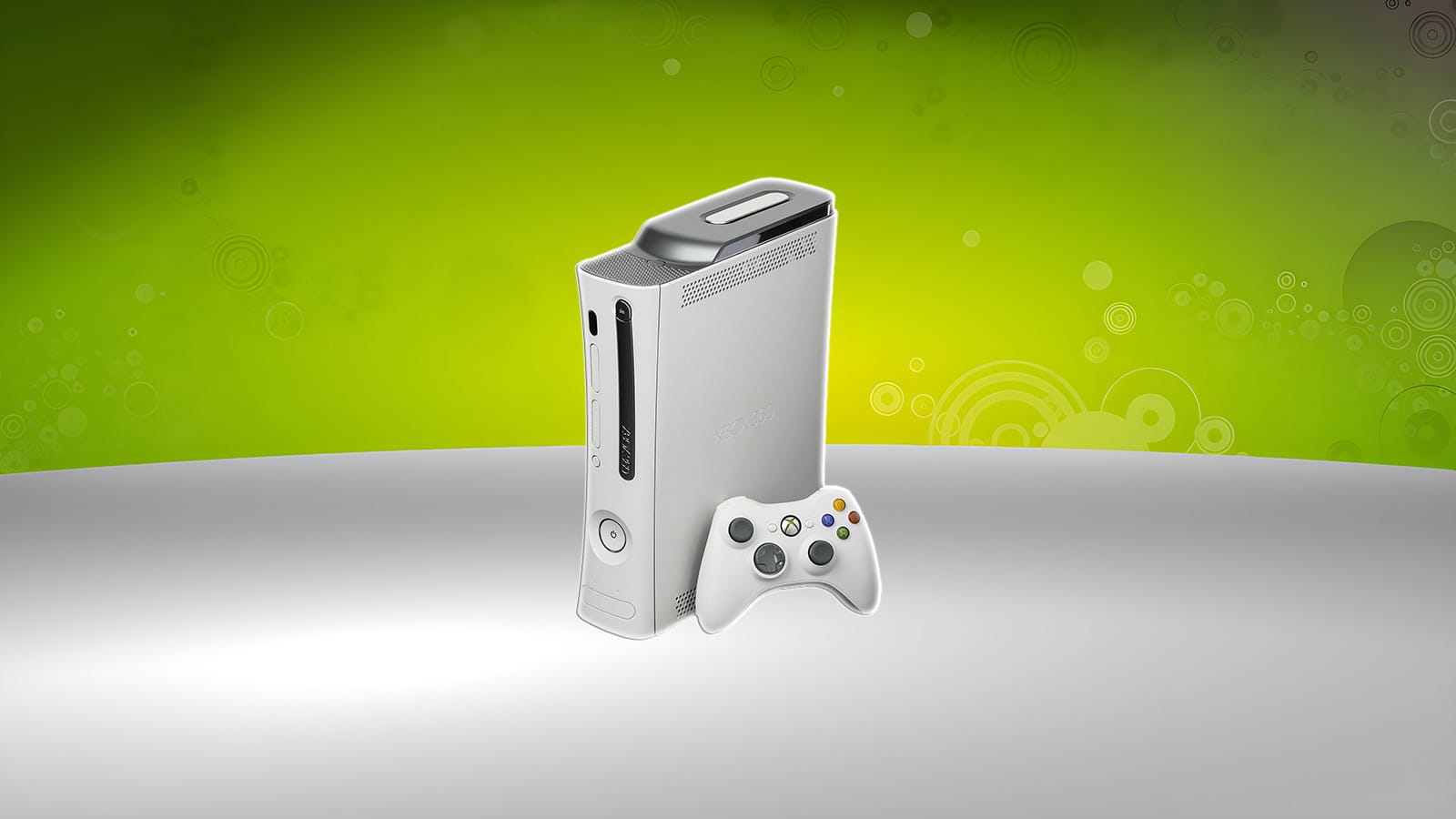
Long before the curtains lifted on E3 proper, Microsoft had already tried to seize control of the narrative. In an unprecedented move, the company premiered the Xbox 360 not at the expo itself, but on a slickly produced, worldwide special broadcast on MTV. It was part music video, part infomercial, part hype-fueled fever dream. The message was clear: Xbox wasn’t just a gaming brand anymore—it was a lifestyle, a cultural signifier meant to sit proudly beneath the glow of your brand-new HDTV.
The gamble was audacious. For millions of viewers around the globe, their first taste of next-gen came not from the convention floor but from a television event that blurred the line between entertainment and marketing. The sleek, white console was unveiled like a fashion accessory, shown alongside celebrities and thumping soundtracks, framed less as a piece of hardware and more as a must-own artifact of modern cool.
Yet in staging such a big pre-E3 splash, Microsoft set expectations sky-high. By the time the company rolled onto the actual show floor in Los Angeles, some of the shock and awe had already dissipated. What should have been thunderous felt more like a carefully choreographed echo, leaving critics to wonder if Microsoft had fired its biggest shots too soon.
On paper, Microsoft had all the ingredients for a show-stopper: a new console, heavyweight publishing partners, and the promise of a gaming future built on high-definition spectacle. But when the lights dimmed and the announcements rolled out, the sense of awe didn’t quite land. Many in attendance expected seismic shocks—brand-new exclusives, genre-defining reveals, perhaps even a bold reinvention of what Xbox could be. Instead, what they got felt more like a carefully rehearsed sales pitch.
The hardware was impressive, yes. The demos looked sharp, the specs ticked all the right boxes, and the talk of HD gaming sounded futuristic in 2005. But surprises were scarce. Much of the Xbox 360 story had already been told through leaks, interviews, and that MTV blitz. Fans who had crammed into Microsoft’s presser hoping for bombshell revelations left with a nagging sense of déjà vu.
It wasn’t a disaster by any stretch—far from it. Yet compared to the spectacle Sony would unleash days later, Microsoft’s showcase felt curiously restrained, as if the company had played its hand a little too early and had nothing left up its sleeve.
One announcement did manage to grab attention, though it was tinged with uncertainty. Microsoft confirmed that the Xbox 360 would support backwards compatibility—something players desperately wanted as they prepared to leap into the next generation. The promise of carrying over their Xbox libraries sounded like a win. But then came the caveat: only “top-selling Xbox games” were guaranteed to work.
The idea of preserving continuity between generations was forward-thinking, but the execution left fans uneasy. While Sony and Nintendo both had their own approaches to compatibility, Microsoft’s hedging risked alienating the very audience it was hoping to keep loyal during the transition. At a show built on bold declarations, “sort of” backwards compatibility wasn’t the confident victory fans had been hoping for.
If Microsoft’s own announcements didn’t quite bring the fireworks, Electronic Arts was more than happy to supply some muscle. EA president Don Mattrick joined Xbox chief Peter Moore on stage, signaling just how deep the publisher’s commitment to Xbox 360 really was. More than 25 titles were revealed to be in development for the console, covering everything from the usual annual juggernauts like Madden and FIFA to experimental projects aimed at flexing the 360’s high-definition muscle. For Microsoft, landing EA’s full-throated support was a coup.
But perhaps the biggest surprise of Microsoft’s showcase came from a name few expected to see on its stage: Square Enix. For years, the Final Fantasy house had been synonymous with Sony, its sprawling RPGs helping to define the PlayStation brand. Yet here it was, pledging support for Xbox 360 with the announcement that Final Fantasy XI—Square Enix’s ambitious MMORPG—would make the jump to Microsoft’s console.
The move wasn’t just about one game. It was a signal flare, proof that Microsoft was serious about courting the Japanese market, an arena where the original Xbox had struggled to gain a foothold. By aligning with Square Enix, Microsoft was effectively saying: we’re not just about shooters and sports—we want to play in the RPG big leagues too.
For Square Enix, the partnership made sense. The company was increasingly focused on building massive online worlds, and Xbox Live had already proven itself as the most robust online platform of the era. It was a strategic marriage of convenience: Microsoft needed prestige, Square Enix needed infrastructure. The crowd may not have erupted with the same fervor as they would for a brand-new Final Fantasy, but the symbolic weight of the announcement was undeniable. It was the clearest sign yet that the Xbox 360 wasn’t afraid to challenge old loyalties.
Sony: PlayStation 3 Steals the Show
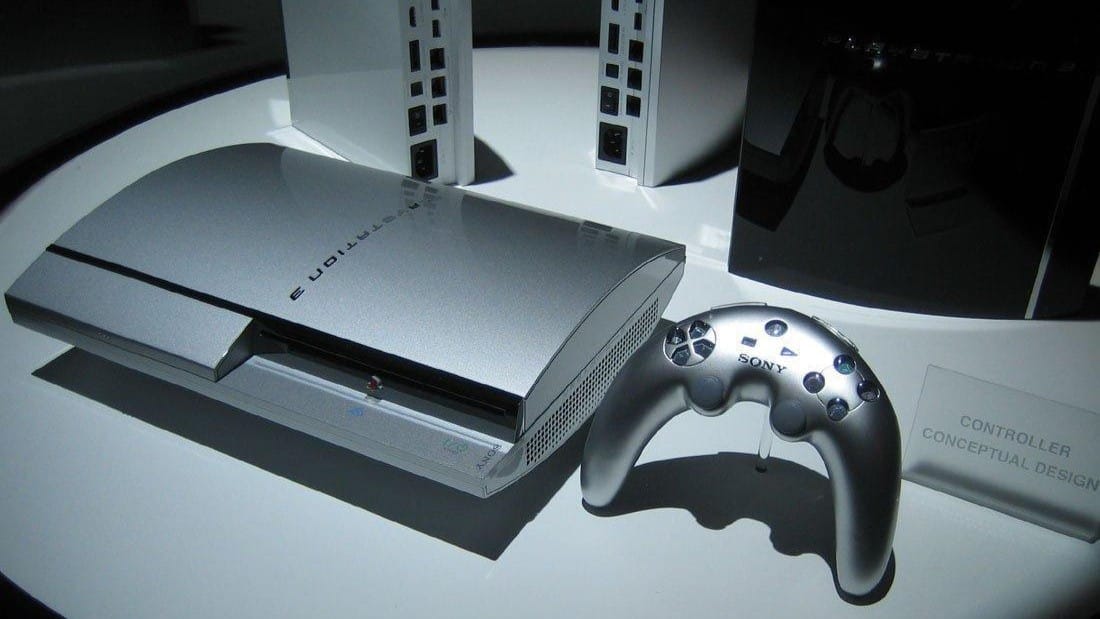
If Microsoft arrived at E3 2005 trying to rally momentum, Sony stormed in determined to steal it away. Rather than divide attention between its successful PS2 and the still-young PSP, Sony shoved nearly everything aside to spotlight its next crown jewel: the PlayStation 3. It was a bold move, one that effectively told the world, the future is here, and it belongs to us.
The strategy was deliberate. Microsoft had already unveiled the Xbox 360, but Sony’s presentation was orchestrated to one-up its rival at every turn. From the opening slides to the jaw-dropping tech demos, the PS3 was positioned not merely as another console, but as a technological superpower. Where Microsoft promised “high-definition,” Sony countered with dual 1080p outputs. Where Xbox touted online infrastructure, Sony boasted of cinematic visuals and overwhelming horsepower.
For the audience, the message was crystal clear: Sony wasn’t playing defense. This was a preemptive strike, an attempt to halt Microsoft’s momentum before it ever truly began. By the end of the show, it was hard to ignore the feeling that the battlefield had tilted—and that Sony had landed the first devastating blow.
Sony knew spectacle, and in 2005 it wielded it like a weapon. The PlayStation 3 was presented not just as a console, but as a technological leviathan designed to dwarf its competition. On paper, the numbers were staggering: dual HDMI ports, support for dual 1080p outputs, and even the possibility of stitching two HDTVs together for a panoramic 32:9 display. In an era when most households still clung to bulky CRTs, it sounded like science fiction.
But it wasn’t just the specs that had tongues wagging—it was the demos. Sony’s stage was filled with graphics so crisp, so impossibly detailed, that critics whispered about smoke and mirrors. Was that Motorstorm footage really running in real-time? Could the PS3 actually produce visuals of that fidelity, or was this another pre-rendered sleight of hand?
Even if doubts lingered, the sheer spectacle worked. The PS3 wasn’t just positioned as the next step forward; it was cast as a generational leap, a machine so advanced it practically dared players to dream. For a moment, at least, Sony made the future feel dazzlingly within reach.
If Sony’s hardware pitch didn’t already feel intimidating enough, its roster of allies sealed the impression. Heavy hitters like Capcom and Namco took the stage to confirm development for PlayStation 3, giving the console an aura of inevitability. These weren’t just any publishers—they were the architects of arcade legends, the studios behind franchises that had defined entire generations of players.
Capcom promised next-gen spectacle, hinting at projects that would push the PS3’s horsepower to its limits. Namco, ever the master of fighting games and sprawling RPGs, pledged its own support, reassuring fans that Tekken and Tales would not be far behind. Combined with murmurs from other major studios, Sony’s partnership parade painted a picture of overwhelming third-party loyalty.
It wasn’t just about quantity, though—it was about prestige. By aligning with Japan’s most respected developers, Sony framed the PS3 as the “serious” choice, the console destined to inherit the creative lineage of the PS2. In contrast to Microsoft’s flashier but narrower lineup, Sony’s alliances gave its new machine the sheen of cultural dominance before it had even shipped a single unit.
For all the spectacle, a shadow of doubt crept over Sony’s PS3 showcase. The demos were breathtaking, but they looked almost too perfect. Frames were buttery smooth, textures impossibly sharp, and effects rivaled pre-rendered CGI. The question hanging over the audience was simple: was this really running on prototype hardware, or just smoke and mirrors?
Journalists left the presentation buzzing, yet skeptical. Sony had a reputation for dressing up its hardware with pre-rendered footage and “target renders” that didn’t always translate into playable reality. The skepticism wasn’t unfounded; veterans remembered the infamous PS2 reveal, when graphics pitched as real-time later turned out to be more aspirational than achievable.
Still, doubt couldn’t completely undercut the hype. Even if the demos were exaggerations, they sold a vision—a promise of what games might one day look like. Sony’s ability to blur the line between reality and fantasy left its rivals scrambling, and fans willing to suspend disbelief. Whether real or not, the illusion worked.
Nintendo: The Revolution Will Be Televised
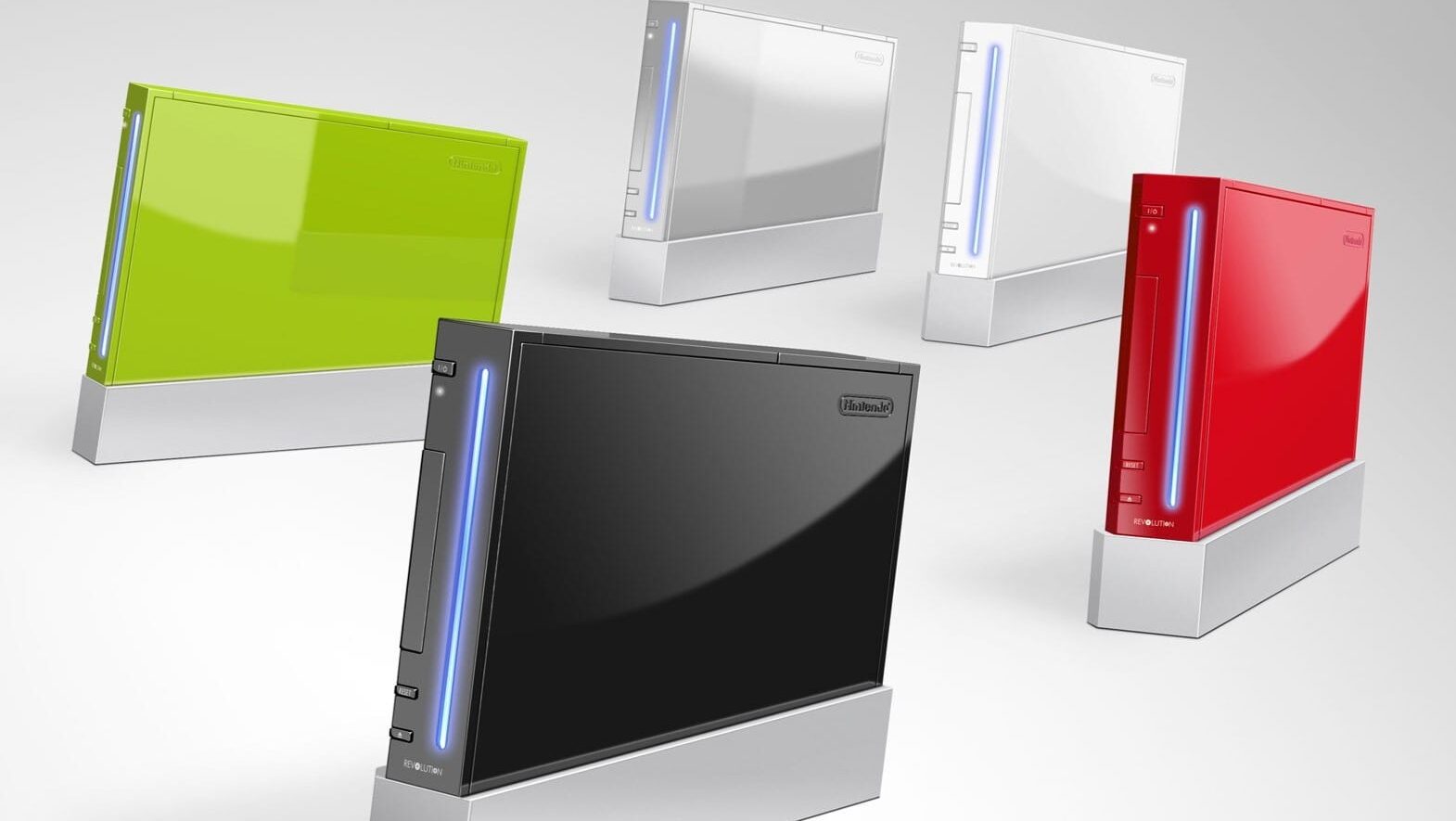
While Sony dazzled with bombast and Microsoft pushed technology, Nintendo leaned into mystery. At its pre-E3 conference, the company finally lifted the curtain—partially—on its next-generation console, codenamed “Revolution.” The sleek, jet-black box sat quietly on stage, small and understated compared to the hulking hardware of its rivals. Yet despite its modest appearance, it carried the weight of enormous intrigue.
President Satoru Iwata kept the details close to his chest. No deep dives into technical specs. No reveal of the heavily rumored controller. Just enough breadcrumbs to spark speculation. What he did emphasize was philosophy: Revolution would be backwards compatible with GameCube discs, it would support DVD playback, and most tantalizing of all, it would open the door to Nintendo’s vast gaming library, past and present.
It wasn’t the kind of fireworks-filled presentation fans expected, but that was the point. By holding back specifics, Nintendo positioned Revolution as an enigma. In an expo dominated by teraflops and polygons, the company’s restrained approach suggested it was less interested in the horsepower race—and more focused on reshaping how games themselves would be experienced.
Nintendo may have been coy about Revolution’s horsepower, but it wasn’t shy about reassuring fans that their existing libraries wouldn’t be left behind. GameCube support was locked in, ensuring that Twilight Princess and other late-era hits would live on seamlessly with the new hardware. For longtime fans, this continuity felt like a promise—your investment in Nintendo’s past wasn’t being discarded, it was being carried forward.
Even more surprising was the mention of DVD playback. At a time when the PlayStation 2 had practically doubled as the world’s cheapest DVD player, Nintendo had been conspicuously absent from the conversation. Revolution, Iwata teased, would finally close that gap with an internal add-on enabling movie playback. It wasn’t the flashiest announcement of the show, but it suggested a Nintendo willing to inch closer to the multimedia battleground its rivals were already waging.
Still, the whispers around the floor weren’t about movies—they were about what this enigmatic little machine could really do. With GameCube discs guaranteed and DVDs promised, Revolution was shaping up as a curious blend of tradition and modernity. But the real hook lay in something far bolder: the idea of playing Nintendo’s entire history from one console.
If there was one moment during Nintendo’s presentation that truly electrified the room, it was Iwata’s casual mention of a new service that would allow players to download classics from Nintendo’s back catalogue. For the first time, the idea of a “Virtual Console” was spoken aloud—a digital archive spanning the NES, SNES, N64, and potentially beyond.
The pitch was intoxicating. Imagine firing up your Revolution and instantly hopping into Super Mario Bros., The Legend of Zelda, or even cult favorites that had long since vanished from store shelves. At a time when retro collecting was still niche and legal emulation a pipe dream, Nintendo was essentially offering players a legitimate gateway into its history.
It was more than just nostalgia; it was preservation, accessibility, and convenience bundled into one futuristic concept. And it hinted at a console that wasn’t defined by horsepower but by philosophy. Revolution wasn’t just Nintendo’s next system—it was a machine designed to collapse decades of gaming into a single device. For many fans, that announcement overshadowed everything else Nintendo revealed at E3 2005.
Among the few concrete game teases Nintendo dropped, none hit harder than the confirmation of a brand-new Super Smash Bros. The promise was bold: the next entry in the all-star brawler series would launch alongside Revolution itself. For fans, it was the dream scenario—buy the new console, unbox it, and immediately dive into chaotic four-player battles with Mario, Link, Samus, and more.
The crowd reaction was electric, but the reality turned out to be more complicated. Development on what would become Super Smash Bros. Brawl quickly ran into delays, pushing the release years beyond Revolution’s debut. Still, the mere mention of Smash on the horizon did its job at E3 2005. Even without footage, even without details, the brand alone carried enough gravitational pull to stoke excitement for Nintendo’s new machine. It was a reminder that sometimes all Nintendo had to do was drop a single franchise name, and the industry would listen.
Even as Nintendo teased its enigmatic Revolution, the company wasn’t ready to leave the GameCube behind without a proper curtain call. On the show floor, two titles in particular lit up the crowd: The Legend of Zelda: Twilight Princess and Super Mario Strikers. It reminded everyone that the little purple box still had life left in it.
Nintendo’s E3 2005 wasn’t just about consoles—it also flexed its handheld dominance with a trio of crowd-pleasers. At the top of the list was New Super Mario Bros. for the DS, a title that instantly set hearts racing. Then came Nintendogs, a quirky pet simulator that had already begun charming audiences in Japan. On the E3 floor, it became a sensation—attendees couldn’t resist picking up a DS to feed, pet, and play fetch with their virtual pups.
Rounding out the surprises was the Game Boy Micro, a pint-sized reimagining of the Game Boy Advance. Its strikingly sleek design, interchangeable faceplates, and pocket-friendly form factor made it an instant conversation piece. While it might not have matched the buzz of Nintendo’s software reveals, the Micro underlined the company’s knack for reinvention—even with hardware that was already nearing the end of its life cycle.
Games That Lit Up E3 2005
E3 2005 wasn’t just about consoles posturing for dominance—it was about the games that promised to define the next era of play. On the show floor, attendees were treated to a dazzling mix of blockbuster franchises, daring experiments, and handheld surprises. Some went on to become instant classics, while others linger in memory as cult favorites that captured the spirit of a transitional moment in gaming history.
The Legend of Zelda: Twilight Princess (Wii, GameCube)
The Zelda Fans Have Been Waiting For: When the lights dimmed and Link galloped onto the screen, the Los Angeles Convention Center erupted. Twilight Princess was everything fans had wanted after The Wind Waker’s divisive reception—dark, cinematic, and mature in tone. The trailer revealed a darker Hyrule, with Link riding into battle on horseback, wielding a bow, and clashing with monstrous enemies in sweeping landscapes. Capped by Shigeru Miyamoto himself wielding a Master Sword on stage, it became one of the defining moments of E3 history.
Civilization IV (PC)
The Legendary Series Is Back: While much of E3 2005 was about flashy visuals, Civilization IV quietly held its own. Firaxis showcased a complete overhaul of its premier 4X strategy series: a sleeker interface, fully 3D world maps, and deep systems that refined the empire-building formula. For fans of PC gaming, it was proof that even amid the console wars, the genre still had a home on the grand stage.
Peter Jackson’s King Kong (PC, Xbox 360, PS2, Xbox, GameCube)
Ubisoft Redefines Movie Games: Licensed games rarely carried prestige, but Ubisoft’s collaboration with Peter Jackson broke the mold. Designed alongside the director’s vision for the film, King Kong impressed with its mix of immersive first-person survival and cinematic set pieces. The promise of switching between human and Kong gameplay added a sense of scale few games had attempted before.
Need for Speed: Most Wanted (PC, Xbox 360, PS2, Xbox, GameCube)
EA Turns Up The Heat: One of its most stylish racers yet, Most Wanted blended the speed of NFS Underground with an open-world cops-and-racers fantasy that dripped with attitude. Open-world city streets, dynamic police chases, and stylish FMV villains on the “Blacklist” created a campaign that felt larger than life. Attendees buzzed about the adrenaline rush of outrunning cops at 150 mph, and for many, it became the must-play racing game of the year.
Burnout Revenge (Xbox 360, PS2, Xbox)
E3 Crowd-Pleaser: Hot on the heels of Burnout 3: Takedown, Criterion came back with even more destruction. Burnout Revenge doubled down on vehicular carnage, introducing the ability to slam traffic into opponents and chain massive crashes together. Few games on the floor captured that pure, chaotic joy of breaking the rules like this one did.
Phoenix Wright: Ace Attorney (Nintendo DS)
Quirky Courtroom Adventure: On paper, a courtroom drama starring a spiky-haired lawyer shouldn’t have worked at E3. But Capcom’s localization of Phoenix Wright was a sleeper hit, catching the attention of curious onlookers with its quirky characters and sharp humor. Little did anyone know it would blossom into a beloved franchise with a cult following in the West.
MotorStorm (PS3)
Too Good To Be True: Sony wowed crowds with MotorStorm, an off-road racer that looked almost too good to be true. Mud-splattered vehicles, dynamic crashes, and rough terrain physics hinted at what the PlayStation 3 could deliver. While critics questioned whether the demo was real-time, the concept alone had attendees daydreaming about next-gen possibilities.
Gunstar Super Heroes (GBA)
Treasure’s Explosive Sequel: Treasure returned to one of its most celebrated creations with this Game Boy Advance follow-up. Gunstar Super Heroes packed explosive action into handheld form, offering massive bosses, slick animations, and a breakneck pace that felt like an arcade in your pocket. While overshadowed by bigger next-gen reveals, it stood as proof that 2D action games still had a vital place in 2005. For retro fans, it was a love letter to a golden age of side-scrolling mayhem.
Gran Turismo HD Concept (PS3)
A Glimpse of the Future: Sony rolled out the Spider-Man-infused Gran Turismo tech demo, seamlessly blending movie-quality visuals with racing sequences to hammer home the PS3’s supposed graphical prowess. Cars gleamed with showroom polish, and lighting and reflections bordered on photorealistic. Of course, questions lingered. Was this actual gameplay or just a carefully crafted proof-of-concept? Gran Turismo HD itself never became a full retail title, but its DNA was eventually absorbed into Gran Turismo 5.
Soulcalibur III (PS2)
Combat Never Looked So Smooth: Soulcalibur III made a strong showing, introducing new warriors, refined mechanics, and an ambitious single-player campaign. What grabbed attention most, though, was the new character creation mode, which allowed fans to craft their own fighters for the first time. For fighting game enthusiasts, it was a promise that the genre’s golden days were far from over, even as arcades waned in the West.
Nintendogs (Nintendo DS)
Cute & Cuddly: In a sea of dark fantasy epics and high-octane racers, Nintendogs stole hearts. Attendees were entranced by the ability to pet, train, and play with lifelike puppies using the DS touchscreen and microphone. It was simple, wholesome, and completely different from anything else at the show. More importantly, it hinted at Nintendo’s growing strategy of expanding gaming’s reach beyond traditional audiences—a strategy that would pay off enormously a year later.
Super Mario Strikers (GameCube)
Mario Meets Soccer: Mario had raced, golfed, and even partied—but E3 2005 introduced fans to a whole new side of him: soccer. Super Mario Strikers turned the world’s most popular sport into a chaotic, over-the-top brawler where anything went. Power-ups, exaggerated animations, and brutal tackles turned matches into slapstick mayhem. On the show floor, the game’s fast-paced multiplayer made it one of the most addictive demos around.
New Super Mario Bros. (Nintendo DS)
Side Scrolling Reinvented: After more than a decade, Mario finally returned to his 2D roots. The reveal of New Super Mario Bros. was met with cheers from longtime fans who grew up with the NES and SNES classics. Bright visuals, clever level design, and that unmistakable platforming charm made this one of Nintendo’s most talked-about DS titles.
Project Gotham Racing 3 (Xbox 360)
Exciting High-Definition Racing: Microsoft’s Xbox 360 needed a slick racing showcase, and PGR3 delivered. Featuring photorealistic cityscapes, meticulously modeled cars, and smooth online integration, it looked like a true generational leap. On the floor, fans marveled at how lifelike the vehicles looked, down to individual reflections on the paint jobs. It was the kind of technical showcase that made people believe in the Xbox 360’s potential.
Tekken 6 (PS3, Xbox 360, PSP)
Next-Gen Tekken: Namco had not one, but two fighting giants at E3 2005. While Soulcalibur III catered to flashy weapon duels, Tekken 6 carried the legacy of one of the most respected 3D fighters in the world. Early footage teased smoother animations, massive arenas, and a few mysterious newcomers. Even without much concrete information, the mere announcement of Tekken 6 was enough to electrify fans eager for the next chapter.
Looking Back at E3 2005
In the years that followed, the narrative of E3 2005 took on new shades. Sony came out swinging, dazzling the press with impossible graphics and bold promises. Sony flaunted dual HDMI outputs, multiple memory card slots, and cinematic game demos that made the PS3 look like the future of gaming.
But behind the glossy press releases, reality was more complicated. When the PlayStation 3 finally arrived, many of those features had vanished, trimmed away to tame an astronomical launch price. HDMI outputs and ports were trimmed, and some promised multimedia functionality arrived slowly through firmware updates—or not at all. While it’s easy to say that Sony was too ambitious at E3 2005, these concepts prove how much they were willing to demonstrate the PS3’s potential as a pioneer in gaming.
When Nintendo first unveiled the “Revolution” at E3 2005, the console promised a bold new direction for what a living room experience could be. Yet, beneath the excitement, some caveats hinted at a longer, more complicated journey. Plans for DVD playback were quietly shelved, limiting the console’s appeal as an all-in-one media hub. Several marquee launch titles, initially touted as system sellers, were delayed or reshuffled, leaving early adopters with fewer immediate reasons to dive in.
Nintendo also made strategic shifts in priority, choosing to focus on accessibility, motion-based innovation, and a broader audience rather than competing solely on raw processing power. This approach, while initially puzzling to hardcore fans expecting an HD arms race, ultimately set the stage for the Wii’s revolutionary success.
Looking back, E3 2005 reads like a time capsule of ambition, hype, and industry bravado. It was the moment gaming fully embraced high-definition. It was where online ecosystems started to define player communities. It was when Nintendo quietly laid the groundwork for its most successful console of all time. And it was when Microsoft proved it was no longer the newcomer, but a true rival. More than just a flashpoint in gaming history, it was the show that made the future feel inevitable.


